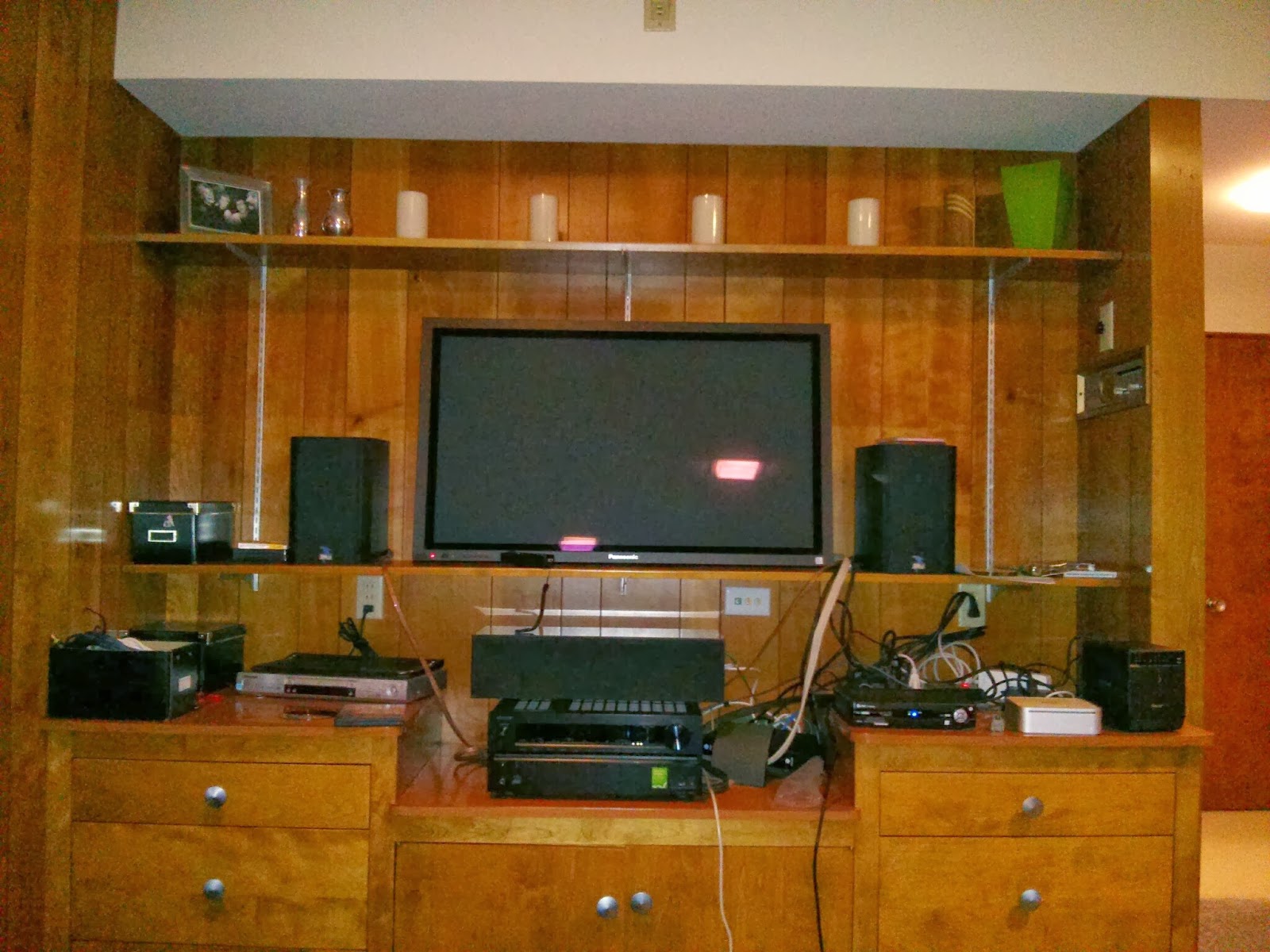 |
| Hand drawings...[drool] |
It was also designed by an Architect who was on top of his game. Everything is tightly fitting; there are no nooks and crannies available through which to sneak wires.
I'll just have a salad...
 |
| AIIIIIIEEEEEE!!!!!! |
Time for Back to the Future!
First, some shelf standards, fake cherry shelves, and a power strip...
 |
| Brooms not included. |
OK, that's a good start. Things are looking up.
"Hey! Kerr!" you say, "That's still pretty messy looking!"
It's a work in progress photo! Back off! Don't make me cut you with my wire strippers...
I had planned on using some kind of IR blaster to make all the remotes work with the equipment in the closet. But then I stumbled across iRule.
"Hey! Kerr!" you say, "That's still pretty messy looking!"
It's a work in progress photo! Back off! Don't make me cut you with my wire strippers...
I had planned on using some kind of IR blaster to make all the remotes work with the equipment in the closet. But then I stumbled across iRule.
iRule? Why yes, thank you, I do.
It's rare to find a product that has such a high WAF (wife acceptance factor) that you get the unmitigated green light.
 |
| Note: Steph is not a bald English dude. |
iRule is that product. It allows you to control nearly anything - electronics, lighting, drapery - via an iOS/Android app.
If it can be controlled via IP address, infrared (IR) remote, RS-232 (serial) cable, etc, it can be controlled by iRule. There are add-in modules for Apple TV, iTunes, Sonos, Lutron, Levitron and several others. And best of all, it's dead simple to set up. You use a web interface to select the equipment you are trying to control, and just drag and drop the commands onto the buttons.
Want to turn on your receiver? Find your make and model, find the 'power on' command, and drag it onto the power button. Done. Want to turn on the TV, and DVD player too? Just drag them onto the same button. But why stop there? Set the receiver to the DVD input, set the sound to THX playback, adjust the volume, and open the disc tray on the player. All with the click of one button.
If it can be controlled via IP address, infrared (IR) remote, RS-232 (serial) cable, etc, it can be controlled by iRule. There are add-in modules for Apple TV, iTunes, Sonos, Lutron, Levitron and several others. And best of all, it's dead simple to set up. You use a web interface to select the equipment you are trying to control, and just drag and drop the commands onto the buttons.
Want to turn on your receiver? Find your make and model, find the 'power on' command, and drag it onto the power button. Done. Want to turn on the TV, and DVD player too? Just drag them onto the same button. But why stop there? Set the receiver to the DVD input, set the sound to THX playback, adjust the volume, and open the disc tray on the player. All with the click of one button.
.PNG) |
| The Home screen that made the sale |
A lot of newer A/V equipment is IP controllable nowadays. Of course, that means there will be quite a few network patch cables. Add in the network cables running to the office and bedrooms, and all of a sudden you need a network backbone. Time for a patch panel and a CAT6 switch. Once all the bedrooms are re-wired, this will be mostly full.
 |
| I really need to do something about that lone blue cable... |









